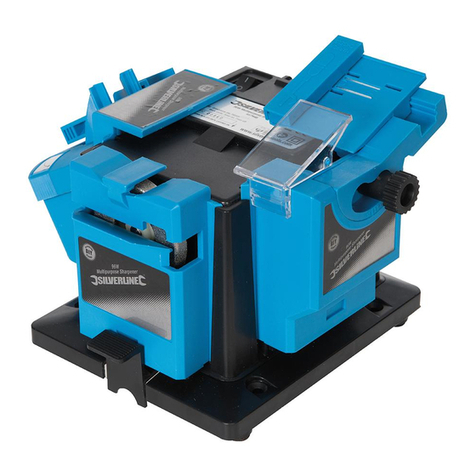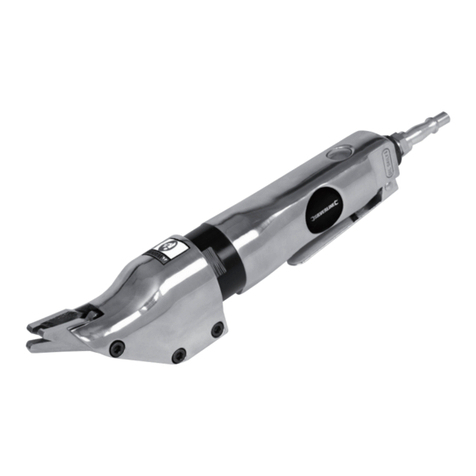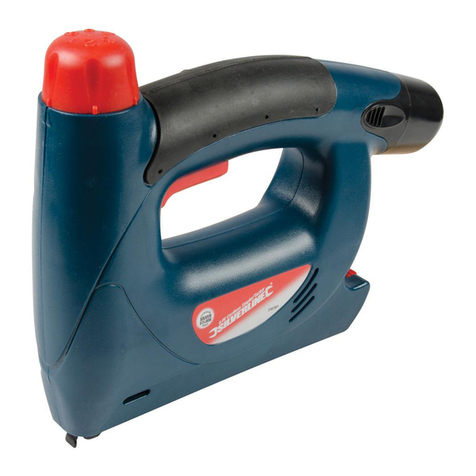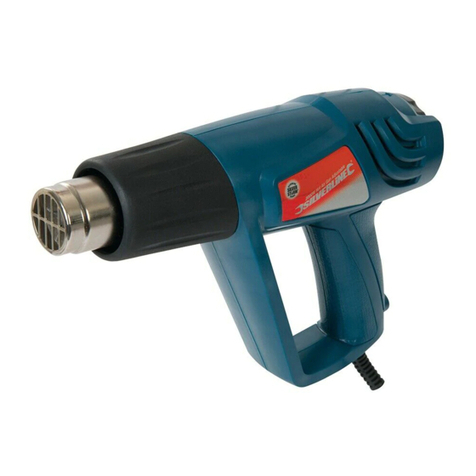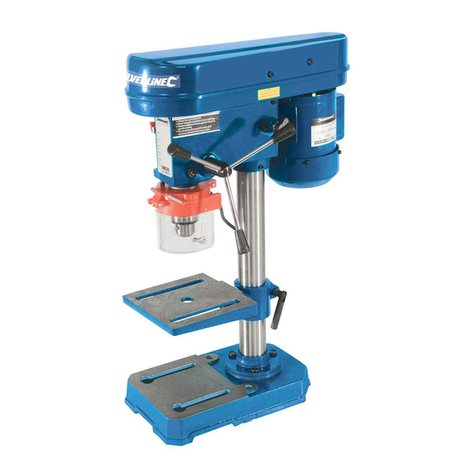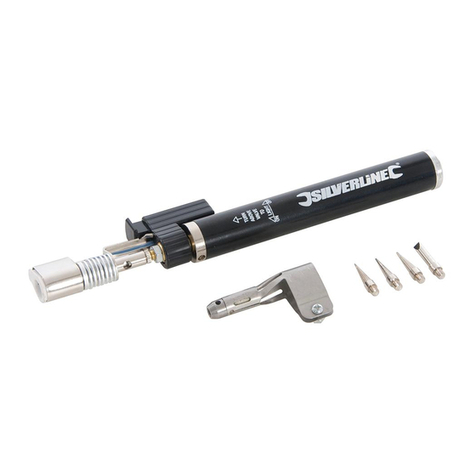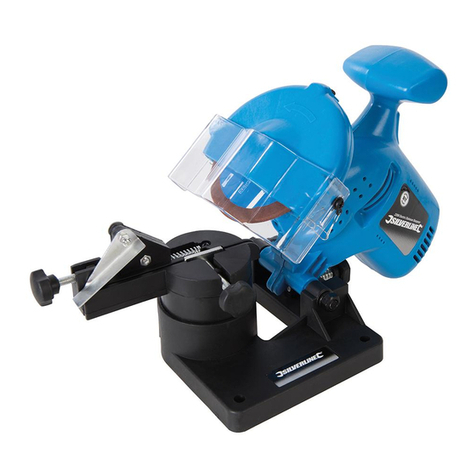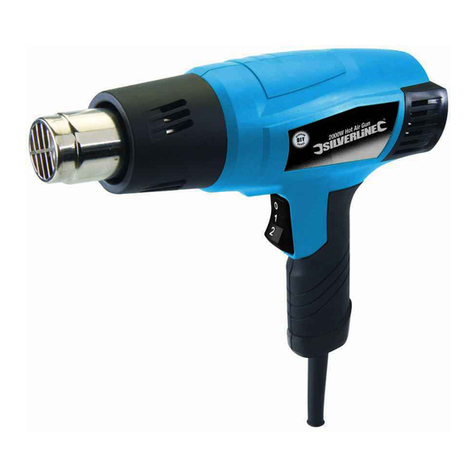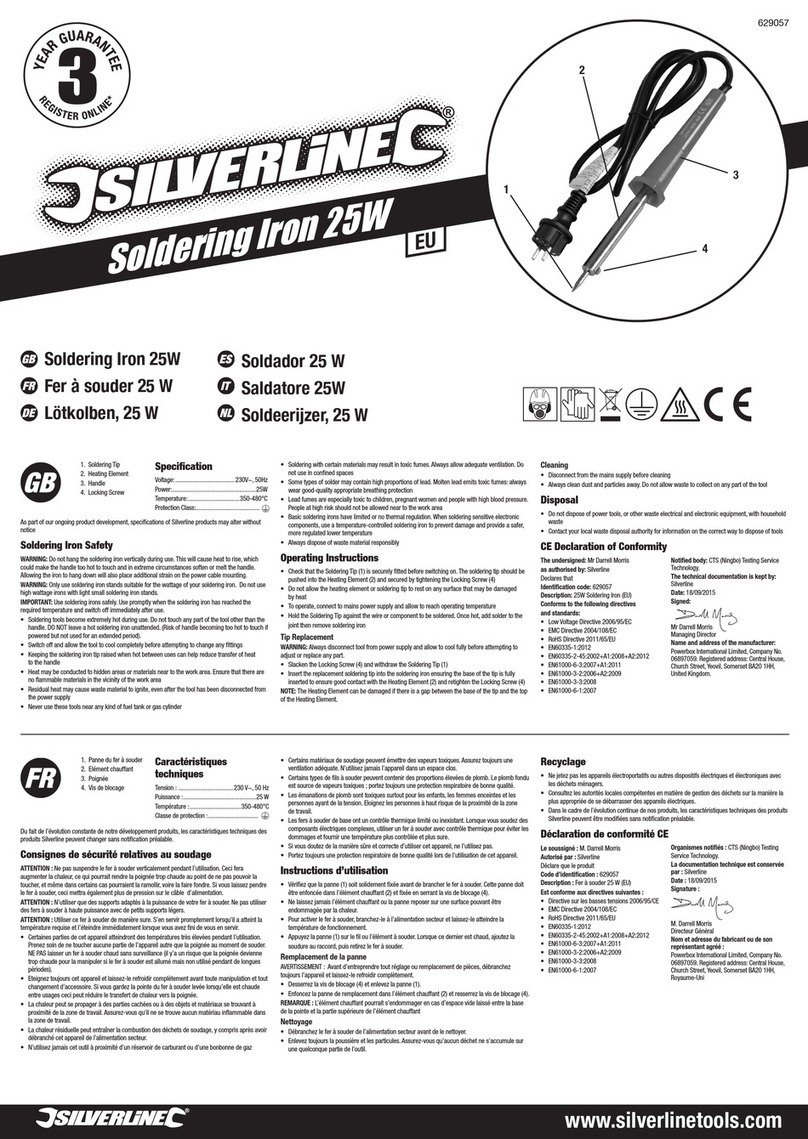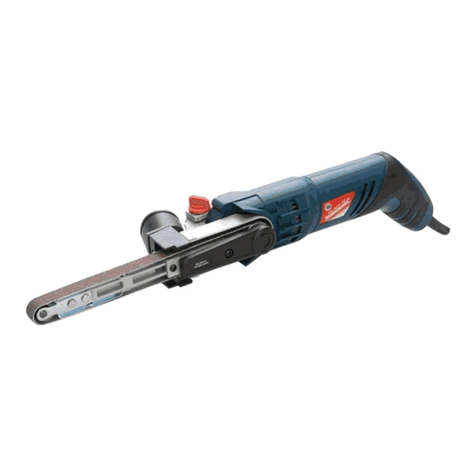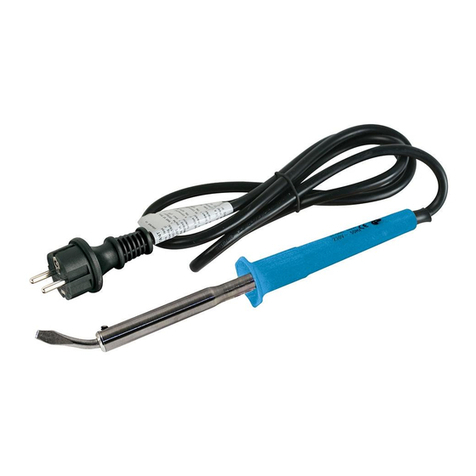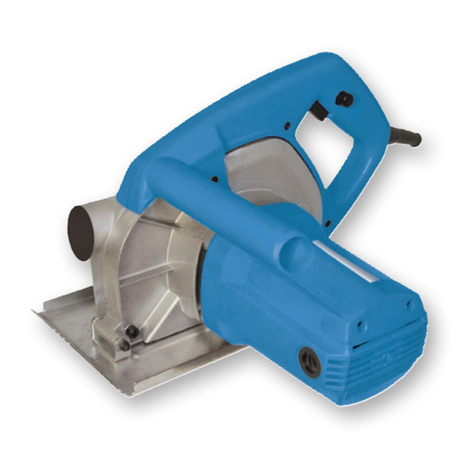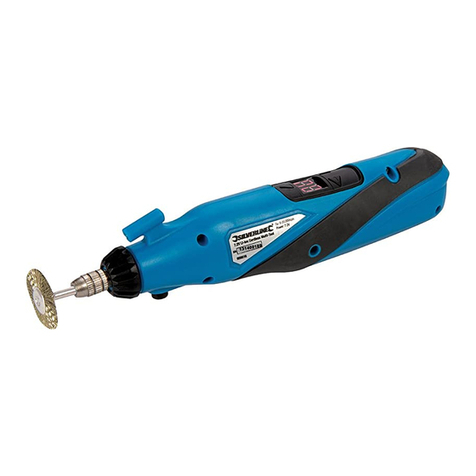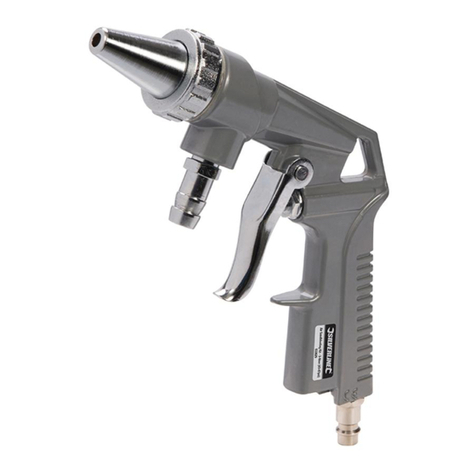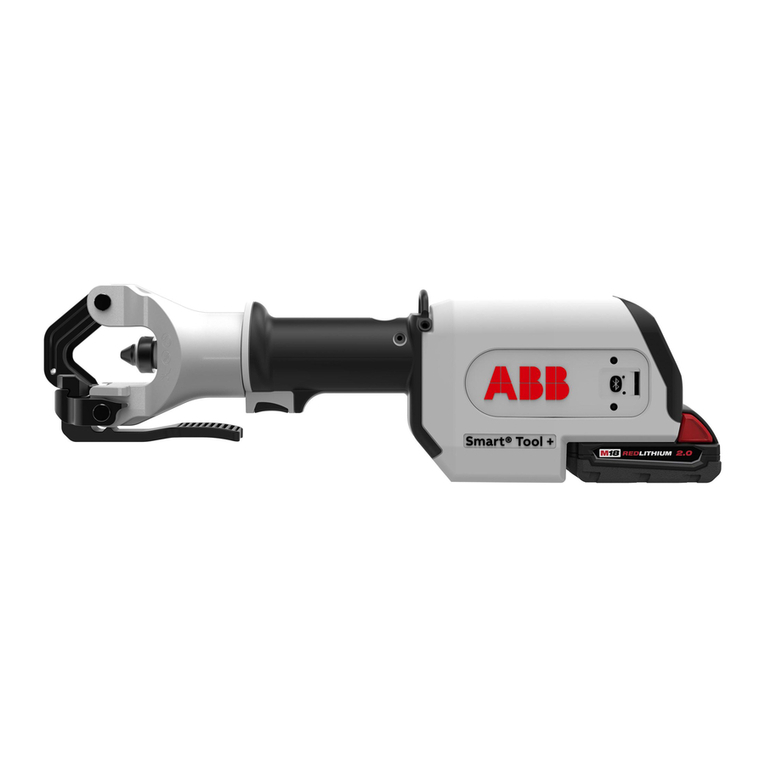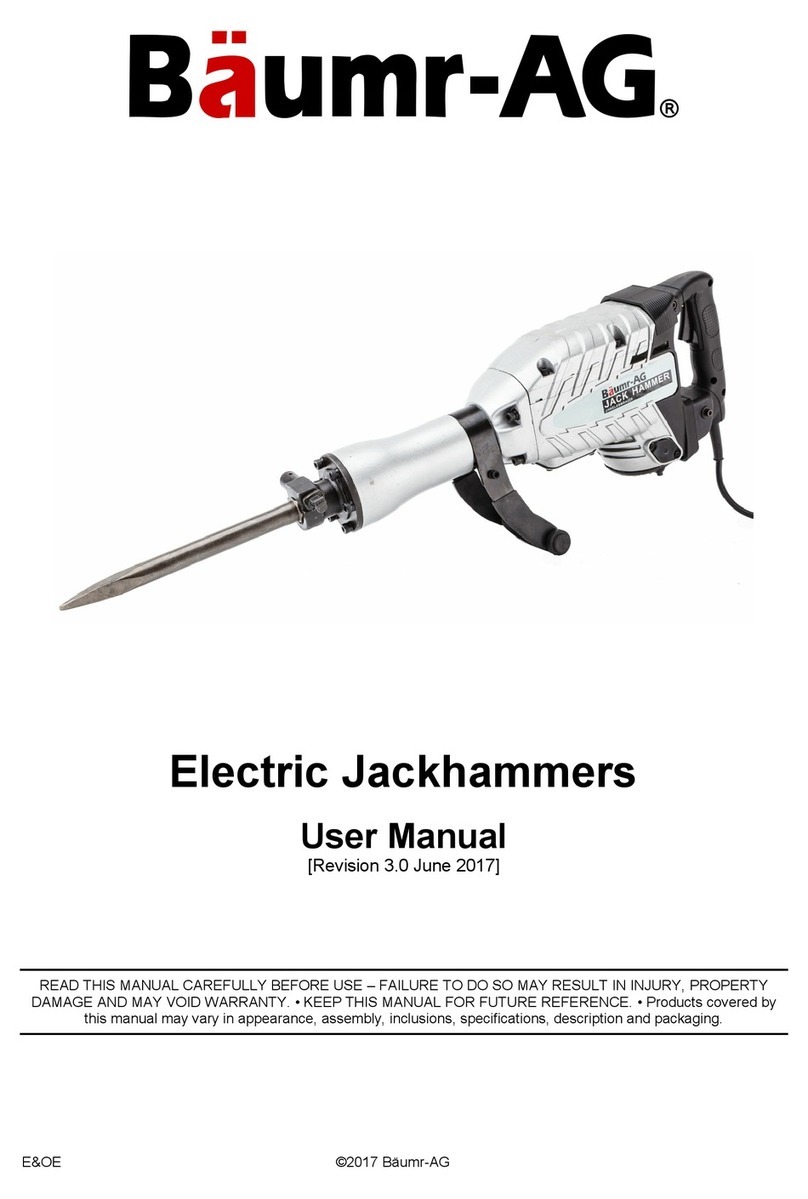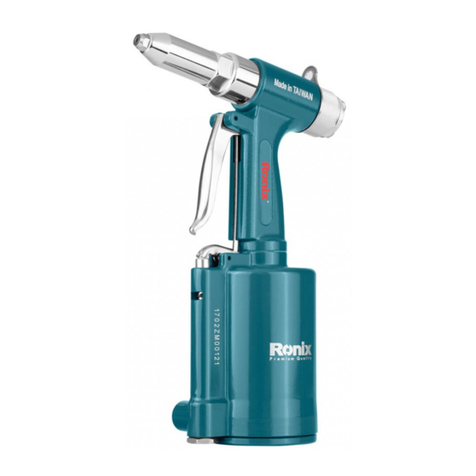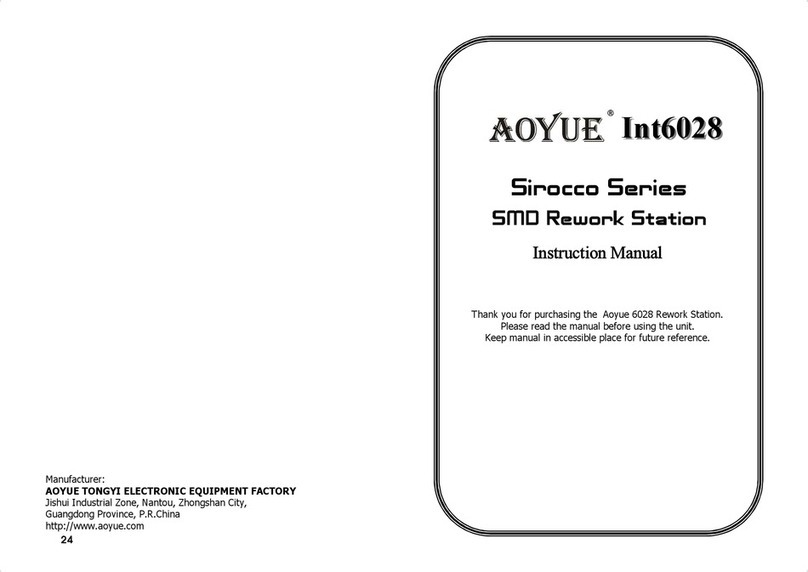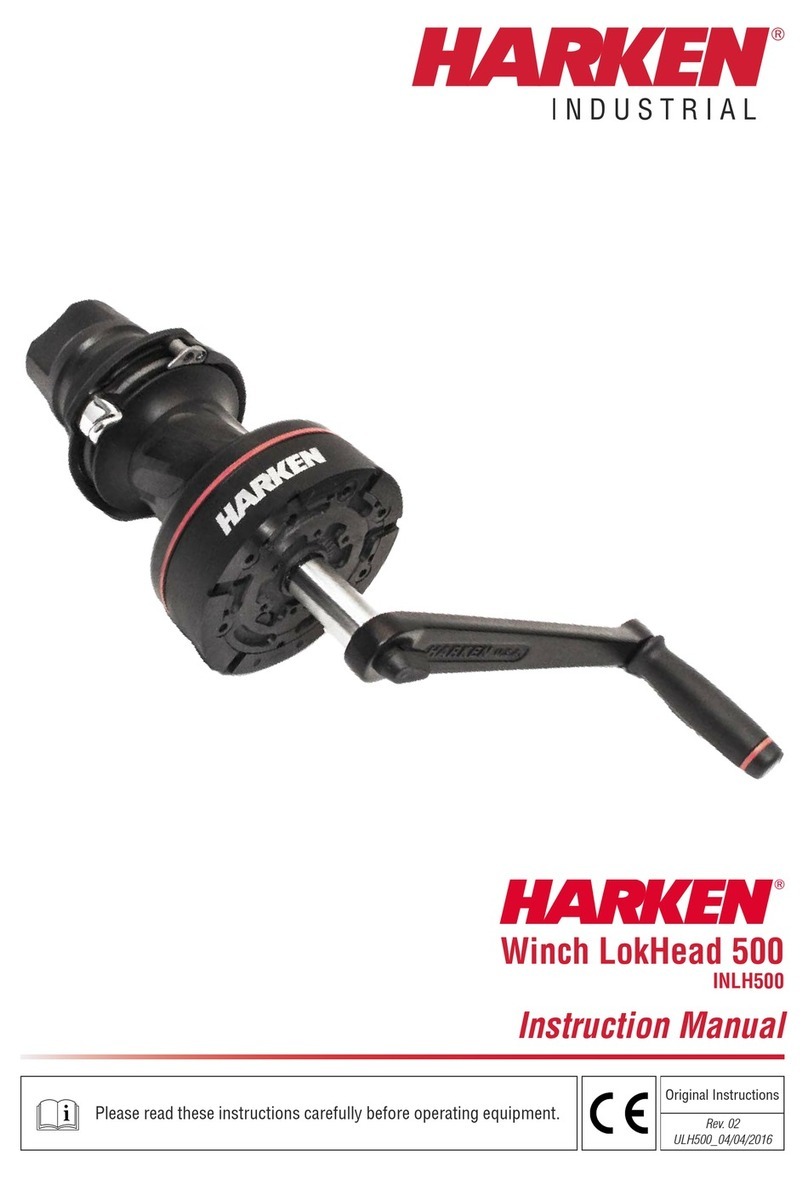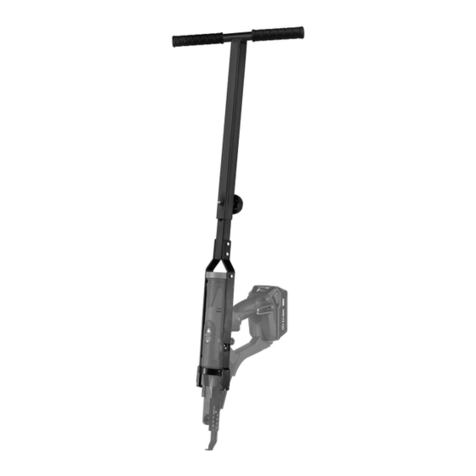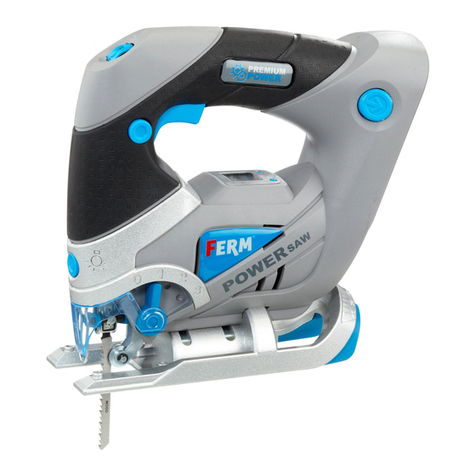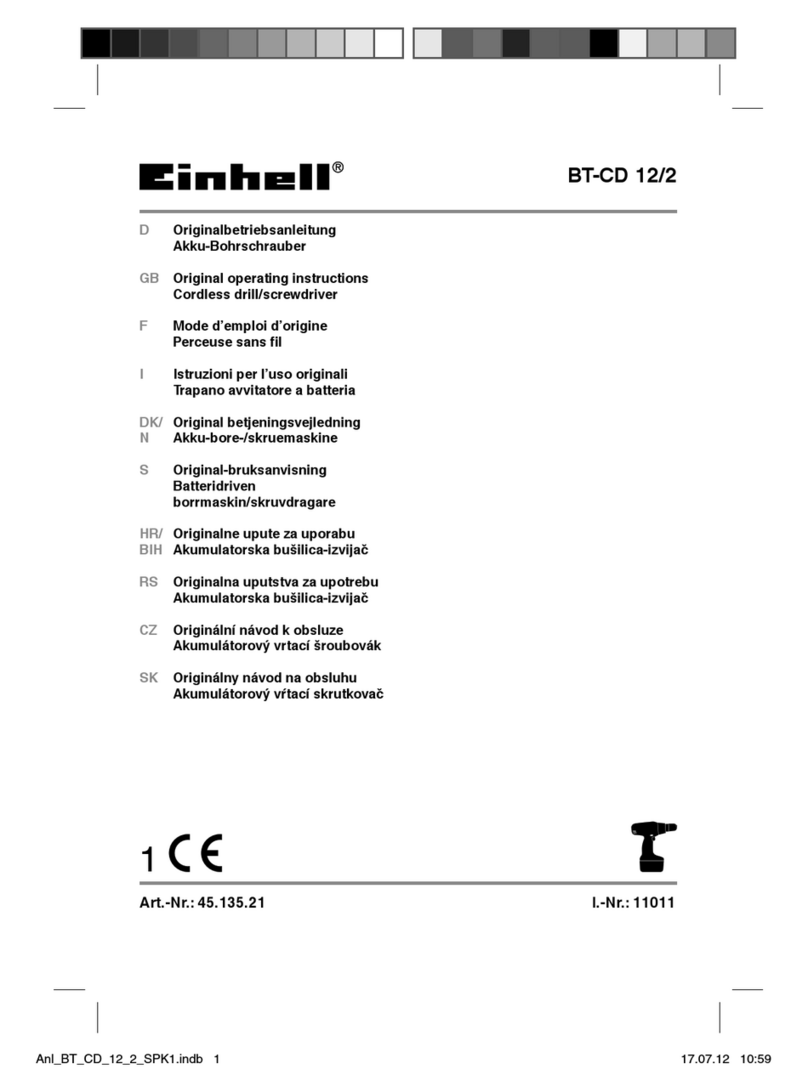
Air Ratchet Wrench656578
5
silverlinetools.com
Projectile Hazards
a) Be aware that failure of the workpiece, accessories,or tool itself can generate high-velocity
projectiles.
b) Always wear impact-resistant eye protection during operation of this tool.The grade of protection
required should be assessed for each use.
c) Assess risk to others when considering projectile hazard risk.
d) Ensure that the workpiece is securely xed.
Entanglement Hazards
a) Injury can occur if loose clothing, personal jewellery,neck wear, hair or gloves are not kept away
from the tool and its accessories.
b) Gloves can become entangled with the rotating drive, causing severed or broken ngers.
c) Rotating drive sockets and drive extensions can easily entangle rubber-coated or metal-
reinforced gloves.
d) Do not wear loose-tting gloves or gloves with cut or frayed ngers.
e) Never hold the drive, socket or drive extension.
Operating Hazards
a) Ensure users and maintenance personnel are physically able to handle the bulk, weight and
power of the tool.
b) Hold the tool correctly; be ready to counteract normal or sudden movements such as recoil.Have
both hands available.
c) Maintain a balanced body position and secure footing.
d) Only use lubricants recommended by the manufacturer.
e) Personal protective safety glasses should be used; suitable gloves and protective clothing are
recommended.
f) For overhead work, wear a safety helmet.
g) Avoid direct contact with moving parts to prevent injury by pinching or cutting.
h) Be aware that there is a risk of electrostatic discharge if used on plastic and other non-conductive
materials.Take appropriate steps to reduce this risk when working with these materials (e.g.
using a grounding system).
i) Be aware that certain materials may present re or explosion risks when being processed. Take
appropriate precautions to reduce hazards.Employers should make risks clear to operators.
j) Switch off device / release start-and-stop control if the air / power supply is interrupted.
k) The use of the tool can expose the operator’s hands to hazards including crushing, impacts,cuts
and abrasions and heat.Wear suitable gloves to protect hands.
l) Fingers can be crushed in open-ended crow-foot nutrunners.
m) Do not use in conned spaces and beware of crushing hands between tool and workpiece,
especially when unscrewing.
Repetitive Motions Hazards
When using the tool the user may experience discomfort in the hands, arms,shoulders, neck or
other parts of the body.
a) Adopt a comfortable posture whilst maintaining secure footing and avoiding awkward or
off-balance postures. Change posture during extended tasks; this can help avoid discomfort and
fatigue.
b) Symptoms such as persistent or recurring discomfort, pain,throbbing, aching,tingling,
numbness, burning sensations or stiffness should not be ignored. Inform employer if
appropriate and consult a qualied health professional.
Accessory Hazards
a) Disconnect the tool from the air supply before tting or changing the accessory.
b) Avoid direct contact with the accessory during and after use.Accessories are often sharp and may
become hot during use.
c) Use only sizes and types of accessories and consumables that are recommended by the
manufacturer of the tool; do not use other types or sizes of accessories or consumables.
d) Ensure the maximum operation speed of any accessory equals or exceeds the rated speed
marked on the tool.
e) Use only impact-wrench-rated sockets in good condition, as poor condition or hand sockets and
accessories used with impact wrenches can shatter and become a projectile.
Work Area Hazards
a) Be aware of slippery surfaces caused by use of the tool and trip hazards caused by the air line.
Slips, trips and falls are major causes of injury.
b) Where possible do not obstruct thoroughfares and passageways with air lines or cables.Take
appropriate measures to reduce trip risk such as erecting warning signs and xing cables and air
lines in place.
c) Proceed with care in unfamiliar surroundings to minimise risk from hidden hazards such as
utility lines.
d) The tool is not intended for use in potentially explosive atmospheres and is not insulated against
contact with electric power.
e) Ensure that there are no electrical cables, gas pipes, etc.,which could cause a hazard if damaged
by use of the tool.
Dust and Fume Hazards
Dust and fumes can cause ill health (e.g. cancer, birth defects,asthma and/or dermatitis); risk
assessment and implementation of appropriate controls for these hazards are essential.
a) Risks assessed should include dust created by the use of the tool and the potential for disturbing
existing dust.
b) Direct the exhaust to minimise disturbance of dust.
c) Control dust and fumes at the point of emission as a priority.
d) Select, maintain and replace consumables / accessories as recommended in the instructions,to
prevent an unnecessary increase in dust or fumes.
e) Use respiratory protection in accordance with any employer's instructions and as required by
occupational health and safety regulations.
f) Take into account the risks associated with different materials. Working in certain materials
creates dust and fumes that may cause an explosive environment.
g) Always use dust extraction or suppression systems which are suitable for the material being
processed.
Noise Hazards
Exposure to high noise levels can cause permanent, disabling hearing loss and other problems,
such as tinnitus (ringing, buzzing,whistling or humming in the ears). Risk assessment and use of
appropriate controls for these hazards are essential.
a) Use appropriate controls to reduce the risk of noise-related injury.These can include actions such
as damping materials to prevent workpieces from ‘ringing’.
b) Use hearing protection in accordance with any employer's instructions and as required by
occupational health and safety regulations.
c) Operate and maintain this tool as recommended in the instructions to prevent an unnecessary
increase in the noise level.
d) Select, maintain and replace the consumable / accessory as recommended in the instructions,to
prevent an unnecessary increase in noise.
e) Where a silencer is available, ensure it is in place and in good working order when the tool is
being operated.
f) Take steps to reduce noise in the work area where possible (e.g. by using damping mats).
Vibration Hazards
Exposure to vibration can cause disabling damage to the nerves and blood supply of the hands
and arms. Not all vibration hazards can be eliminated by tool design or construction,and some
residual risks remain. Check the vibration-emission value (obtained using ISO 28927-3) shown in
the specication table. Ensure the risk it represents is assessed and managed. If the risk cannot be
managed so that it falls within acceptable limits, then do not use the tool.
Take the following steps to reduce risk of vibration-related injury:
• Wear warm clothing when working in cold conditions. Keep hands warm and dry.
• If numbness, tingling, pain or whitening of the skin of ngers or hands is experienced, stop
using the tool, inform employer (where appropriate) and consult a qualied health professional.
• Operate and maintain the tool as recommended in the instructions to prevent an unnecessary
increase in vibration levels.
• Where appropriate, support the weight of the tool in a stand, tensioner or balancer.
• The risk from vibration is generally greater when the grip force is higher. Hold the tool with a
light but safe grip, taking account of the required hand reaction forces.
• Ensure the tool and accessories are properly mounted and in good repair: improperly mounted
or damaged tools can cause excessive vibration.
1Forward/Reverse Switch
2Quick Connector
3Speed Control Trigger
4½" Square Drive
Product Familiarisation
Included Accessories (not shown):
½" to 3⁄8" square drive adapter
WARNING: This device is not a torque wrench.After driving, always use a torque wrench to
torque your fasteners.
656578_OwnerManual.indd 5656578_OwnerManual.indd 5 15/01/2024 12:5415/01/2024 12:54
